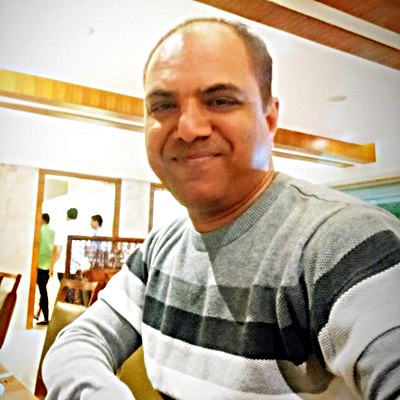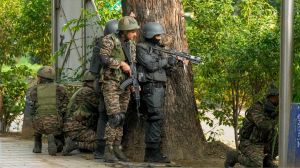Click here to join Express Pune WhatsApp channel and get a curated list of our stories
Building Pune: PMC to enhance sewage treatment capacity to ensure clean water discharge into Mula-Mutha river
The initiative is aimed at meeting the demand of 1,092 million litres per day (MLD) for sewage treatment by 2027; project to be implemented under the AMRUT 2.0 scheme.
 With the population expected to rise to 92 lakh in 2037, the sewage treatment capacity for the city is estimated to be 1,450 MLD. By 2047, the capacity should be 1,072 MLD to cater to a population of 1.1 crores. (File)
With the population expected to rise to 92 lakh in 2037, the sewage treatment capacity for the city is estimated to be 1,450 MLD. By 2047, the capacity should be 1,072 MLD to cater to a population of 1.1 crores. (File)The Pune Municipal Corporation (PMC), which is struggling to treat the sewage generated within its jurisdiction and ensure clean water is released into the Mula-Mutha River, is set to enhance the sewage treatment facilities. The initiative that is aimed at meeting the projected demand of 1,092 million litres per day (MLD) for sewage treatment by 2027 will be developed through a Rs 842 crore fund, including Rs 506 crore approved by the Centre under the AMRUT 2.0 scheme.
Currently, around 92 per cent of Pune city is covered through a sewerage network that spans 2,200 kilometres, which includes six intermediate pumping stations and 10 Sewage Treatment Plants (STPs).
The cumulative treatment capacity of these plants is 567 MLD. However, the old STP at Naidu Hospital with a capacity of 90 MLD is demolished for the reconstruction of a 127 MLD plant. Hence, the effective treatment capacity is 477 MLD. This capacity will be increased by 396 MLD after the ongoing new STP projects funded by the Japan International Cooperation Agency (JICA) are completed by 2027.
“The PMC plans to increase the capacity further with 10 MLD in the old city area, 12 MLD in the newly merged 11 villages, and 82 MLD in 23 merged villages. This will increase the sewage treatment capacity to 977 MLD by 2027 as against the estimated generation of 1,092 MLD to meet the requirement of the 70 lakh population of the city,” said Manisha Shekatkar, Chief Engineer of the PMC. Under the AMRUT scheme, the State and Central Governments are to bear 50 per cent of the expenses.
With the population expected to rise to 92 lakh in 2037, the sewage treatment capacity for the city is estimated to be 1,450 MLD. By 2047, the capacity should be 1,072 MLD to cater to a population of 1.1 crores.
As part of the plans under AMRUT 2.0, he said the existing STP of 130 MLD at Bhairoba, constructed in 2003, will be demolished to develop a new STP of 200 MLD capacity. The STP at Tanajiwadi will be demolished to make way for a new 26 MLD STP and enhancement of 18 MLD STP to 28 MLD STP at Bopodi. Upgrades will also be carried out at 115 MLD STP at New Naidu, 50 MLD STP at Erandwane, and 32 MLD STP at Vithalwadi.
“The objective is to ensure that the treated wastewater is able to meet the discharge parameters, extend the life of existing STPs, and improves the quality of treated wastewater for reuse and implement green initiatives by developing a compressed biogas system for large capacity STPs,” she said.
Civic activist Vivek Velankar said there are new standards set for treated sewage water, which has to be maintained by the civic body. He expressed concern over the lack of capacity to treat the entire sewage generated, as the untreated water goes into the river.
“The city consumes around 1,800 MLD of water. So sewage generated will be at least 1,500 MLD, but the PMC estimate is well below the actual consumption of domestic water in the city. Moreover, the PMC is somehow approaching its estimated wastewater generation in 2027, which means some amount of untreated water will continue to be released into the river and pollute the water body. In reality, water consumption is going to increase with the rise in population. Hence, the PMC should plan for the next 20 years from now rather than for just two years,” he said.
Click here to join Express Pune WhatsApp channel and get a curated list of our stories













